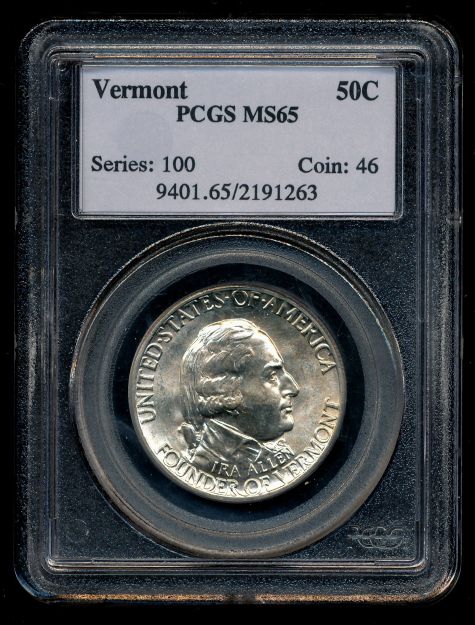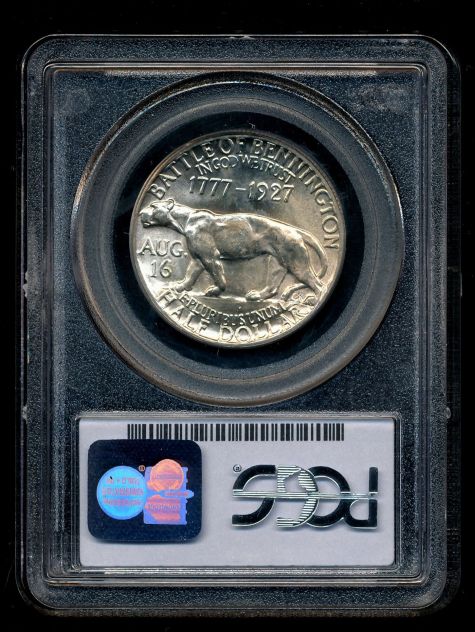I believe most here understand that I enjoy a good history-based story side dish with my commemorative coins and medals main course. It's one reason why I enjoy collecting pieces related to the coins and medals (from a historical perspective) and such serves as the basis for today's story.
The 1927 Battle of Bennington - Vermont Independence Sesquicentennial Half Dollar was designed by Charles Keck and features a right-facing portrait of Ira Allen on its obverse and a left-facing Catamount on its reverse.
Ira Allen was a logical choice considering his strong local ties to early Vermont history. (See
American Personalities - Part III for details.) The reverse went through several iterations with the Commission of Fine Arts (CFA), One draft reverse design depicted Fay's House (later renamed the Catamount Tavern) in consideration of it being a historically important meeting place in early Vermont, especially for the Green Mountain Boys (GMBs), and that it was the place where John Stark and the GMBs planned for the Battle of Bennington (among other battles). The CFA was generally against depicting buildings on coins and thus recommended the symbolic use of a catamount, believing it would be much more amenable to superior artistic rendering. Keck did a fine job IMO!
1927 Battle of Bennington-Vermont Independence Sesquicentennial

While Ira Allen was certainly a central figure in Vermont's early days as an independent Republic and as the 14th State, I've wondered if there could have been another individual from Vermont's past that would also have been appropriate for the coin? Ethan Allen perhaps? Thomas Chittenden maybe?
One figure that I would offer up as being central to the coin's subject of the Battle of Bennington, would be General John Stark. It was Stark who led militia forces from New Hampshire to victory during the Battle of Bennington over the combined German, British, Colonial Loyalist and Native American forces under British Lieutenant Colonel Friedrich Baum. (See
1927 Battle Of Bennington, Vermont Indep. Sesquicentennial - Location for an overview of the battle.)
But as Keck and the Vermont Sesquicentennial Commission went a different direction with the coin, I turned my attention to commemorative medals to help round out, numismatically speaking, the story of the Battle of Bennington.
The medal shown here is the "Official Bicentennial Medal" of New Hampshire; it was struck by Medallic Art Company (MACO). The Franklin Mint (FM) struck Proof versions of the medal in bronze and silver; MACO struck bronze and silver medals in mid-relief with an antique finish (like the one presented here), as well as high-relief versions. The medal was a part of an "Original 13 Colonies" Set that I took a liking to years ago, and so added several variations of it to my collection.
The medal features a forward-facing General Stark on its obverse and an American Revolutionary War era gun powder horn on the reverse.
1976 Bicentennial Medal - New Hampshire / General John Stark

I think the 1927 Half Dollar would have been well-served with a conjoined portraits design that featured Ira Allen (statesman perspective) and John Stark (military perspective). But such is left to me to ponder!
For more of my topics on commemorative coins and medals, including more about the Bennington/Vermont half dollar, see:
Commems Collection.